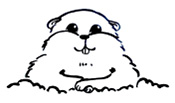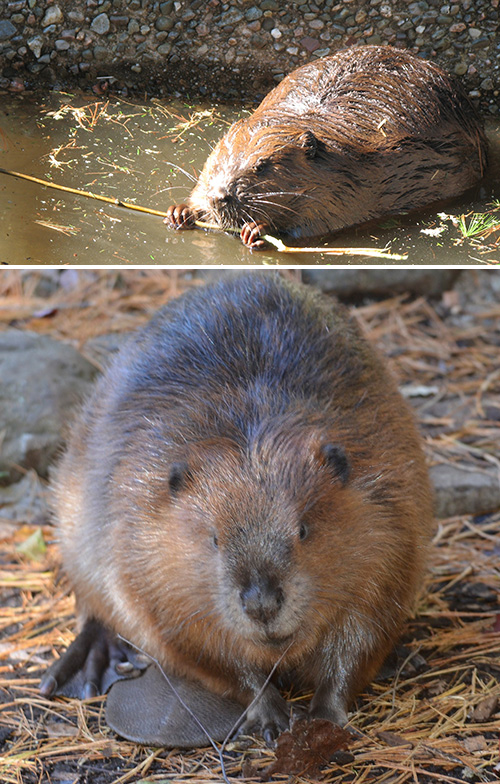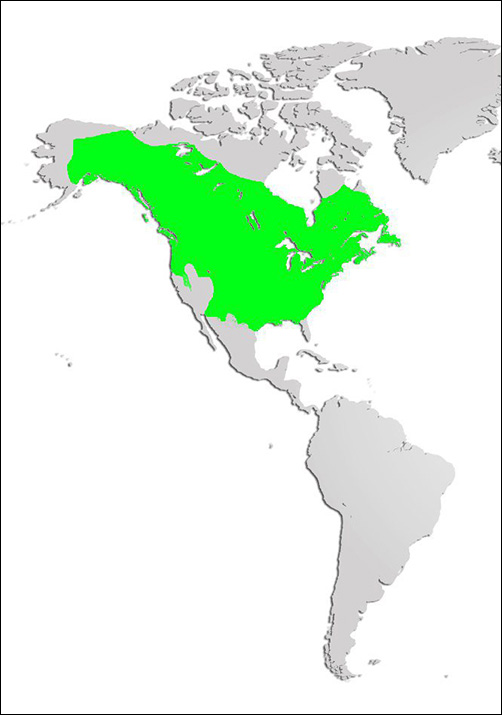Beaver
Class: Mammalia
Order: Rodentia
Family: Castoridae
Genus: Castor
Scientific Name: Castor Canadensis
Description: Beavers are the largest rodent in North America and are recognized by their orange-enameled teeth, large flat tail, and webbed hind feet. Beavers are normally dark brown in colour and their weight varies with age, sex, and season, but most adults weigh 20 kg (44 lbs). Slow and deliberate on land, beavers are capable of walking on their hind feet, using their tail for balance, while carrying sticks or stones with their front legs. Once in the water, however, beavers are streamlined and graceful, swimming up to 7km/h (4.4mph).
Distribution and Habitat: Beavers are found across North America and are common throughout Nova Scotia. When beavers move into a small stream, they build a dam that creates a pond deep enough to keep it from freezing to the bottom. Their lodge, built in the centre of the pond, only accessible from underwater, is the beaver’s fortress: 1.8 to 2.7 m (5.9 to 8.9 ft) high and 3 to 6 m (9.8 to 19.7 ft) in diameter. Both lodges and dams are built of logs, sticks, mud, and rocks. The living area of the beaver lodge is set above the water level, and an outer covering of mud makes the lodge weather tight. In winter, the mud freezes hard and prevents predators from getting in if they manage to cross the surface ice to the lodge. Beaver dams can be maintained through the generations, for hundreds of years, if undisturbed.
• See Map
Diet: Herbivores, beavers eat the bark of hardwood trees and shrubs, including trembling aspens, willows, and white birch, as well as the leaves, twigs and buds. Beavers store their winter food supply in caches underwater, allowing them access to food all winter, maintained in water temperatures similar to that of a refrigerator.
Life Cycle: Beavers are monogamous, forming breeding pairs for life. Mating occurs in January and February, with 1 to 8 young (kits) born from April to late June. Young stay with their parents for 2 years, after which they disperse and develop their own family. Their first year is spent growing, eating and playing; their second year with their family is spent helping care for the new litter of young and building/maintaining the family dam(s) and lodge. When young beavers go off on their own they are fully skilled in beaver activities.
Adaptations: The beaver’s paddle-shaped tail which serves as a rudder while swimming, is used to prop themselves up when standing, and as a balance and lever when dragging logs. A slap of the tail on water also signals danger to other beavers. Beavers have a scent gland located at the base of the tail, which produces an oily substance known as castor; beavers use this to waterproof their fur through copious amounts of grooming and also to scent “mudpies” placed along beaver trails as a form of communication.
Beavers have many characteristics that help them adapt to life in water including fur-lined lips which can close behind their front teeth (incisors) allowing them to clasp tree branches and roots in their mouth while underwater. When beavers dive, their nose and ears use built-in valves that close tightly to keep water out. Besides their normal eyelids, beavers have an inner transparent 3rd eyelid that protects the eyes while underwater, like safety goggles. Beavers usually stay underwater for 3 to 4 minutes, but if necessary can extend that time to 15 minutes. They have large, webbed hind feet, which enable them to swim up to 800 m (2624.7 ft) underwater without surfacing for air.
Did you know? The beaver has been Canada's national emblem for over 300 years, serving as a model for hard work and perseverance.



